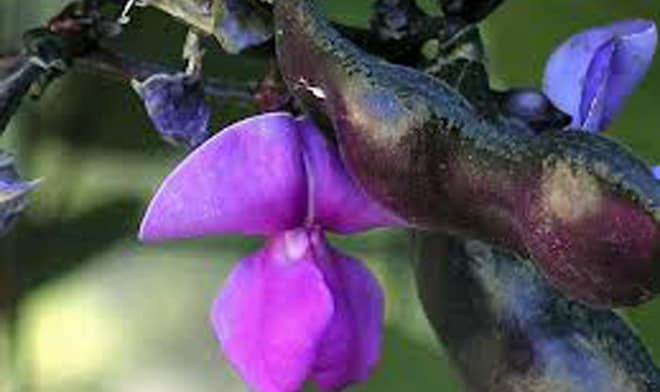Lablab, a type of bean or legume, is native to the African tropics. Lablab, however, plays a larger role in the diets of Asia, particularly India. In the United States, lablab is more commonly known as the hyacinth bean and is planted for its purple flowers.
Lablab grows abundantly where other crops cannot because the lablab plant can survive in varying climates. For example, lablab can grow in areas without much water and can flourish in areas of heat and humidity. In India, the lablab plant is known to produce between 2.6 to 4.5 tons of beans per hectare.
Lablab can help stabilize soil as well since roots capture nitrogen from the air. Or it can be used as green manure and grown as ground cover. Dr. Pat Dacha said, “lablab is grown to help prevent weeds and help retain moisture in orchards.”
As with other legumes, lablab is a good source of protein. The seeds, or beans, can be boiled or roasted. In parts of India and Southeast Asia, the beans are then mixed into curries or soups. In Kenya, the beans are mashed with bananas. In other parts of Africa, lablab is mashed into bean cakes or paste. The seeds can also be boiled and processed like tofu, or fermented into tempeh. In addition to the beans, the leaves and flowers can also be eaten.
While the leaves and flowers can be eaten raw, it is important to make sure that once the beans have reached maturity they are fully cooked before eating. Raw mature beans or dried beans can be poisonous, as they can contain cyanogenic glycosides, a compound that is poisonous when broken down or digested. In addition to ensuring that dry and mature beans are fully cooked, lablab beans should be eaten in moderate quantities.















